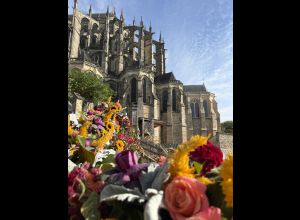Le Mans , labeled " City of Art and History" , conceals in his heart a hidden gem : the Plantagenet City . Twenty hectares of cobbled streets, inhabited homes in pan- de-bois and Renaissance hotels, sheltered by a Roman wall and overhung by a cathedral. Saint -Julien cathedral, mi Romanesque, mi Gothic, is also one of the largest in France ( for 134m along an area of 5000m2 ) .
Le Mans, thanks to its rich heritage , recovery and quality entertainment is a candidate for World Heritage (UNESCO classification ) .
The imprint of the Plantagenet dynasty
Heir to the counties established by Charlemagne, coveted by its powerful neighbours in Normandy and Angers, in the 12th century, Maine entered into Angers' circle of influence.
The link between the Plantagenets and Le Mans was established on 17th June 1128 with the marriage in the cathedral of Geoffrey Plantagenet, Count of Anjou and Maine, and Matilda, widow of the German Emperor. Granddaughter of William the Conqueror, "The Empress" was the heiress of the Kingdom of England and the dukedom of Normandy. Their son Henry was born in 1133 in the palace of the counts of Le Mans (current Town Hall) and was baptised in St Julian's cathedral. Dying in 1151, Geoffrey was buried in the cathedral: the enamel plate depicting him used to adorn his tomb. In 1152, Henry married Eleanor of Aquitaine, who brought him, as a dowry the entire south-west of France. He was crowned king of England in 1154. Maine was then involved in the conflicts between the kingdoms of England and France. Their son Richard the Lionheart, living for the Holy Land, was married in 1191 in Cyprus to Berengaria of Navarre. After becoming a widow, in 1204 Queen Berengaria obtained the administration of Le Mans and the surrounding territory. She lived during 25 years in the royal palace of the counts. The monarch rests in Le Mans, at the abbey of Épau which she founded.






























